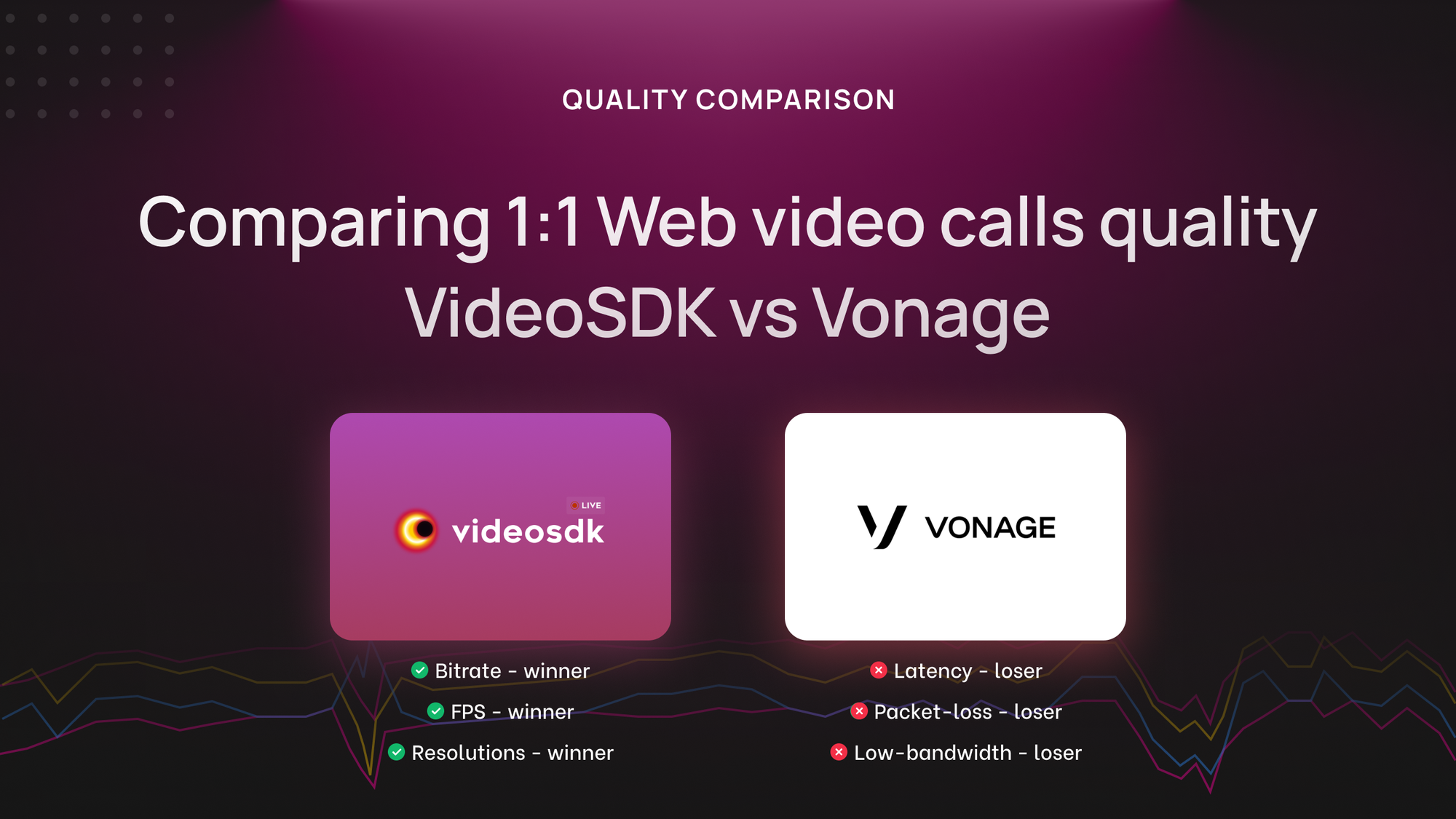In the highly competitive video conferencing space, delivering top-notch video quality and low latency is paramount for user satisfaction. As more developers and businesses integrate video conferencing solutions into their platforms, choosing the right infrastructure can be challenging. VideoSDK and Vonage, both promise high-quality video, but how do they truly compare in real-world one-on-one video calls?
In this blog, we will explore a head-to-head comparison between VideoSDK and Vonage, focusing on critical aspects such as video quality, latency, bandwidth efficiency, and overall call performance to help you make an informed choice.
Quality is the Core!
When it comes to video calls, quality is everything. You can throw in a bunch of cool features or fancy tech, but if you lack in quality, it's a deal-breaker. No arguments there! We understand this, and that's why in this blog, we're diving into the nitty-gritty of quality.
Numerous factors can affect the quality of a video call, with the most basic connection being tied to your network. Thus, while exploring options for migrating to different service providers, you must not compromise the quality.
That's why we're putting VideoSDK against Vonage in a quality showdown under various network bandwidths. See for yourself how VideoSDK not only keeps up but outperforms Vonage's standards.
Setting up the platform
Before we jump into the comparison, let's quickly examine key parameters for our evaluation, including devices, configurations, network throttling, and more.
- We'll be covering standard one-to-one web video calls
- Both the sender and receiver are using MacBook Pro devices.
- In maintaining an unbiased assessment, VideoSDK and Vonage configurations have been set to default. Since their default settings are almost identical.
- Additionally, for measuring network bandwidth, we'll be using fast.com
Test Scenarios
Now that we've covered the setup, let us cover what scenarios we'll be creating to compare call quality between VideoSDK and Vonage.
Firstly, we'll evaluate metrics under normal conditions to establish a baseline.
Following that, we'll introduce network bandwidth throttling from only the narrator's side, simulating various scenarios at -
- 1mbps
- 500kbps
- 250kbps
Results
Here's a look at the important metrics we followed in different network situations, showing how VideoSDK and Vonage tackled challenges. Watch Harshit in the next video showcasing VideoSDK and Vonage demonstrating how they performed.
Let's break down the results, exploring how each handles latency, and packet loss under different network bandwidths.
Frames Per Second (FPS)
As shown in the video, VideoSDK outshines Vonage in providing video quality at a very smooth FPS rate, at different bandwidths. While Vonage frequently experiences interruptions.
Packet-loss
Once again, VideoSDK consistently delivers superior video quality with lower packet loss, while Vonage's video quality tends to degrade significantly under similar conditions.
Conclusion
VideoSDK consistently maintained high-quality video, achieved lower latency, and handled packet loss more efficiently, providing a smoother and more reliable experience. Vonage, on the other hand, struggled to maintain the same level of performance, with noticeable drops in video quality and higher latency during challenging network scenarios.
Thus, it is evident from both the metrics and real-world testing that VideoSDK is the clear winner, offering superior performance for 1:1 video calls.
